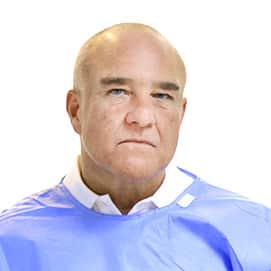If you suspect the presence of a malignant tumor in the upper respiratory and digestive tract, as a rule, the following examinations are performed:
Clinical examination
First, a thorough examination and palpation of the visible areas of the oral cavity and pharynx are carried out. Then, using a special mirror and endoscope, the nasopharynx, pharynx (pharynx) and larynx are examined. If suspicious areas are easily accessible, a sample is taken for histological examination under local anesthesia.
Panendoscopy
During a clinical examination, one can only get an approximate idea of the size and extent of the cancer process. Accurate evidence of the prevalence of the tumor and its operability is possible only after a detailed examination of the upper respiratory and digestive tract.
In addition, a sample is taken from the tumor for histological clarification of the diagnosis. In addition, as part of this examination, a possible already existing tumor (secondary cancer) in the upper respiratory and digestive tract can be excluded or diagnosed. The so-called panendoscopy is a complete examination of the upper respiratory and digestive tract using special optics and an operating microscope. It covers endoscopic examination of the trachea and bronchi, esophagus, larynx, pharynx (including the nasopharynx), as well as the oral cavity.
Ultrasound examination
With the help of an ultrasound examination of the neck, it is possible to determine whether the surrounding lymph nodes of the neck are enlarged. In this case, it is also possible to evaluate the echostructure of the lymph nodes. Enlarged lymph nodes can be a sign that the cancer has spread to the lymph nodes (lymphogenic metastasis). In such cases, it is possible to obtain cells from their suspicious lymph nodes using a needle biopsy and, finally, examine them under a microscope to confirm the diagnosis of metastasis.
Ultrasound in combination with puncture biopsy is a very accurate technique for determining tumor metastasis to the cervical lymph nodes.
Computed tomography (CT)
Computed tomography is an x-ray method in which the entire body is translucent in layers, and it is possible to determine exactly how far the tumor has spread into the surrounding tissues, taking into account the depth of germination. Here, depending on the location, first of all, the distribution into bone or cartilage structures is of interest. In addition, using this method, it is possible to determine the further spread of the cancer process beyond the lymph nodes, for example, to the lungs.
Magnetic resonance imaging (MRI)
Magnetic resonance imaging can, by means of a magnetic field source located outside the examined body, arrange the hydrogen atoms in the human body in one direction for a short time and, using special measurement methods, determine how long it takes until the initial disorder is restored. The data obtained in this way can be adjusted with the help of a computer to a picture of a section of the human body. In this case, adipose tissue and tissues with a high water content are particularly well represented, while the illustration of bone structures is better achieved using computed tomography. Therefore, MRI is performed only for certain questions and tumor localizations.
In the treatment of squamous cell carcinomas of the upper respiratory and digestive tract, specialists from various branches of medicine are involved. These are doctors from the field of ENT diseases, maxillofacial surgery, radiotherapy (radio-oncology) and therapeutic oncology. Within the framework of interdisciplinary, so-called oncological conferences, the most suitable treatment methods are individually selected for each specific case.
Positron emission tomography (PET)
Positron emission tomography can also help detect unknown primary tumors. For this, a radionuclide is used - an analogue of glucose - fluorodeoxyglucose (FDG). It is taken up by rapidly dividing cells with a high metabolism, so tumor tissues differ from normal surrounding tissues in their high FDG content. It is not possible to obtain quantitative and anatomical information regarding adjacent structures from a single PET examination, and false positives have been reported at some time in patients with sarcoidosis, reactive lymphadenopathy, and granulomatous lymphadenitis.
PET diagnostics is currently used in most cases in combination with CT or MRI, in the form of PET-CT or PET-MRI, to detect a primary tumor in patients with a tumor in the head-neck region in case of negative results in other diagnostics, but a known histological diagnosis of metastasis, to determine the stage of lymph node involvement in an operable primary tumor, to determine tumor recurrence, as well as in locally and regionally advanced tumors to exclude or confirm distant metastases.
Head of the Clinic of Oncology, Hematology and Palliative Medicine
Head of the Clinic for General, Visceral, Thoracic and Endocrine Surgery
Head of the Clinic for Radiation Therapy and Radiological Oncology
Video
Request appointment
Useful links
Photo gallery












